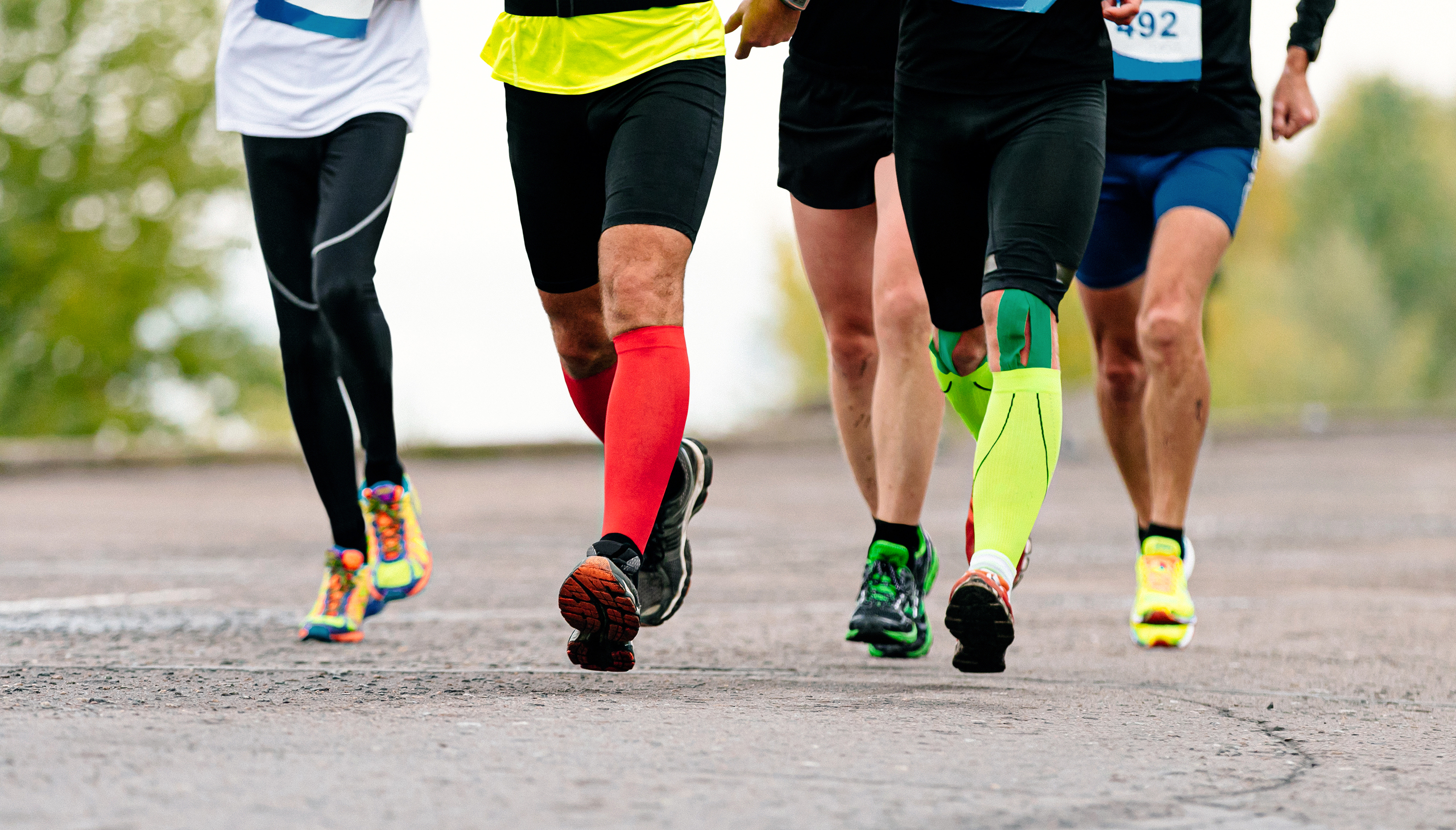
You’ve probably seen athletes in competition or people on long flights wearing a snug pair of compression socks to improve their blood flow. Their uses don’t stop with sports and travel, though. Compression socks or stockings can help with the aching and swelling caused by several health conditions.
Summit Health thoracic surgeon James McPherson, MD, MPH, FACS, walks us through the various uses for compression socks, who should wear them, and ways we can reduce swelling in our legs.
What are compression socks?
Compression socks are tight-fitting pairs of socks that apply pressure to your ankles and legs to move the blood upward. The compression helps prevent blood from pooling in your leg veins, which can lead to problems like blood clots.
Are there different types of compression socks?
These special socks generally fall into three categories:
- Graduated compression socks, which are tightest around the ankle with pressure gradually decreasing up the leg.
- Anti-embolism stockings that help prevent blood clots in patients who aren’t mobile — often those confined to bed after surgery.
- Non-medical support socks, which apply light, uniform pressure throughout. You can buy these at your local pharmacy or online.
Compression socks come in knee-high and thigh-high lengths, as well as a range of compression levels. Some require a prescription and a professional fitting. Your healthcare provider can guide you on sock selection and how to wear them based on your health needs.
Common Health Conditions That Compression Socks Help With
Your provider may recommend compression socks to help with symptoms caused by a vein or venous disorder. Venous disorders happen when the valves in your veins don’t work correctly, making it harder for blood to flow back to your heart. This can lead to:
- Varicose veins are twisted, swollen veins that appear near the skin’s surface. These can cause itching and an aching, burning, or heavy sensation in the legs.
- Chronic venous insufficiency occurs when the leg veins become damaged. Symptoms include pain, swelling, cramping, skin changes, and leg ulcers. People with varicose veins can go on to develop chronic venous insufficiency.
- Post-thrombotic syndrome is a form of chronic venous insufficiency caused by deep vein thrombosis (DVT). DVT happens when a blood clot forms in a deep leg vein. A DVT clot can leave behind scarring that damages your vein. If left untreated, DVT can be life-threatening because the clot can break loose and become lodged in the blood vessels of the lung. This is called a pulmonary embolism, which can be fatal.
- Lymphedema is swelling due to a build-up of fluid called lymph in the body’s soft tissues. Causes of lymphedema include infection, cancer or cancer treatment, and developmental problems of the lymph system.
“Compression therapy is a first-line treatment for venous insufficiency to help with venous return,” says Dr. McPherson. “While compression socks won’t cure varicose veins, they can offer relief from symptoms.”
Who should wear compression socks?
Venous disorders are common among adults, and your risk can increase as you get older. Additionally, your risk may be higher if you:
- Sit or stand for long intervals of time
- Have a family history of venous disease
- Are pregnant
- Had recent surgery
- Lead an inactive lifestyle
“Anyone whose occupation involves standing for long periods — teachers, bartenders, and chefs, for example — are at risk of varicose veins and venous insufficiency,” says Dr. McPherson.
Talk to your primary care provider if you’re concerned about ankle swelling, varicose veins, or the blood flow in your legs. While compression socks are generally safe, you should check with your provider before wearing them. Your provider will help you determine which length and compression level would be ideal for you. They can also refer you to a vascular specialist if you need additional care.
Wearing compression socks
Follow your provider’s instructions for wearing compression socks. How long you’ll have to wear them depends upon your health needs and response to compression therapy.
For best results, you should put on compression socks first thing in the morning when leg swelling is lower. Dr. McPherson recommends bathing or showering the night before so you can get out of bed and put on your compression socks right away.
Some compression socks can be hard to put on. Dr. McPherson says using a pair of textured rubber gloves can make donning them easier. You can buy a gadget called a stocking donner to help get them on, or you can have a family member or caregiver assist you. A skin adhesive product like “It Stays” helps keep socks in place, Dr. McPherson adds.
You may need to wear your compression socks all day. “If you know you’re going to be sitting or on your feet all day, wear your stockings,” Dr. McPherson says. Keep your compression socks clean and replace them as needed. And if your socks cause discomfort, let your provider know.
What else can help reduce leg swelling?
In addition to wearing your compression socks as prescribed, it’s beneficial to:
- Get active. “When the calf muscles contract, blood moves,” says Dr. McPherson. Walking is a good way to work the calf muscles, whether for exercise or to get up periodically during a long trip.
- Work to maintain a healthy weight. Excess weight can slow down blood and lymph return.
- Elevate your legs. Propping your legs on a stool or a couple of pillows while sitting can help during the day. At night, Dr. McPherson recommends putting something between your bed’s box spring and mattress to keep your legs elevated. And remember the saying: toes above your nose.
